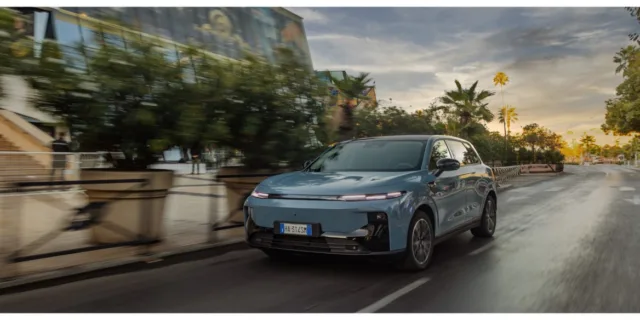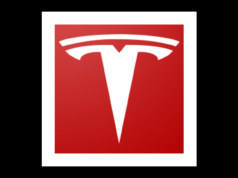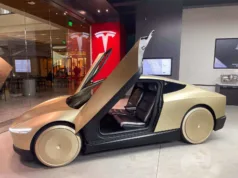- Stellantis’ joint venture with Chinese automaker Leapmotor may be paying off.
- Stellantis owns 20% of the China-based auto brand and also has a majority stake in Leapmotor International, a global joint-venture based off of the company.
- Leapmotor has posted six consecutive months of climbing sales in the largest automotive market in the world, according to Stellantis.
Stellantis is celebrating a «record-breaking» month for Leapmotor, the Chinese automaker of which Stellantis owns 20%, after it delivered 70,000 units in October.
The Chinese startup, which began selling vehicles in 2019, has posted six consecutive months of increased sales numbers and offers partial owner Stellantis a degree of leverage in a booming Chinese auto market in which Western manufacturers have struggled to gain a foothold.
Tu Le, founder of Detroit-based automotive consultancy group Sino Auto Insights, said 70,000 units in a month is nothing to scoff at, especially in the context of the hypercompetitiveness in the Chinese auto market.
In October, Leapmotor outpaced all other Chinese NEV (new energy vehicle) startups — besting nameplates like Xiomi, Xpeng and HIMA — while also selling more vehicles in China than Tesla Inc., which sold 61,497 units in the country.
So far, Stellantis reports that Leapmotor has sold 465,805 vehicles in 2025, good enough for a 120.7% growth compared with the same time period last year for the company.
«Leapmotor improving significantly is great news for them,» Le said. «70,000 units is not insignificant.»
What is Leapmotor?

Stellantis’ strategic partnership with Leapmotor came after the company faltered on its ambitious plans to begin manufacturing and selling its cars in China on the back of a Sergio Marchionne-era, multibillion dollar investment in China.
The plan, inked in 2010 before Fiat Chrysler Automobiles merged with Peugeot-maker PSA group in 2021, was called GAC-Fiat Chrysler and headquartered in China. The plan focused largely on boosting sales of Jeep vehicles in China. The joint venture faltered in 2022 when Stellantis announced it would take an «asset light» approach to the Chinese market.
A year later, Stellantis began investing in the Chinese company, officially partnering in 2024.
That «asset light» approach to China — meaning the company opted for a joint partnership with Leapmotor, buying a 20% stake, rather than attempting to operate its own manufacturing plants there — is paying off, according to Le.
«Being able to leverage Leapmotor for sales is a huge, huge win for (Stellantis), because they weren’t doing well prior to the Leapmotor investment,» Le said. «They stopped manufacturing, effectively, in China and broke up their joint venture — this was their way back in.»
Stellantis and Leapmotor later formed Leapmotor International — a global joint venture in which Stellantis owns 51% of the company and Leapmotor owns 49% — to sell the Leapmotor electric and range-extended vehicles outside of China in places like Europe, Australia and South America.
Leapmotor can now use Stellantis’ sprawling dealership network and international parts distribution capabilities to reach a wider audience, save for in the United States, where heavy tariffs and restrictive trade policies inhibit Chinese automakers from selling cars in the U.S.
Many Leapmotor vehicles are inexpensive but high-tech. When converted from foreign currency, most Leapmotor vehicles sell for around $20,000 – $30,000, though there is no certain timetable or stated plans for the vehicles to become available in the U.S. market.
According to Le, Stellantis stands to profit from a small, well-performing tech-focused Chinese automaker, even if it is dwarfed in sales compared with Chinese titans like BYD, which can sell hundreds of thousands of vehicles in a month. Not only can it cash in on increasing sales, but Le anticipates Stellantis may soon incorporate Leapmotor technologies into its European and American offerings, like Chrysler, Dodge, Fiat, Citroen and Peugeot.
«I would say is that there is a high likelihood that Leapmotor (intellectual property) is going to be in Stellantis vehicles on the road in Europe and in the United States,» Le said. «With Stellantis waving the white flag early on (GAC-FCA), that created this opportunity to invest in Leapmotor, and they’re both benefiting from it.»
A Chinese market in flux
Leapmotor’s largest Chinese rival, BYD, reported a 12% drop in global vehicle sales in October following another decline in September.
Le said that as BYD sales slip, Leapmotor may benefit.
«That 70,000 units is probably eating into BYD sales,» Le said. «BYD sales are slowing down and, you know, their margins are shrinking and that’s due to the competition at large, not just Leapmotor. … A lot of competitors of BYD are now fighting back, including Leapmotor.»
As the global international automotive market — impacted by an ongoing trade war between the U.S. and China — continues to fluctuate, strategic partnerships offer automakers like Stellantis some degree of leverage in the largest automotive market in the world.
«There are partnerships in China, specifically, with a lot of foreign legacies and Chinese entities,» Le said, pointing to deals between automakers like General Motors, Mercedes and Audi with Momenta, a Chinese autonomous driving technology company.
To Le, these partnerships — whether a large stake investment like Stellantis and Leapmotor or technology development supply deals — are necessary for Western automakers to keep up with the development of Chinese manufacturers.
«This is a part and parcel of the foreign legacies to really survive in the China market,» he said. «There is no other way they can stay in the market profitably.»
Liam Rappleye covers Stellantis and the UAW for the Detroit Free Press. Contact him: LRappleye@freepress.com.










